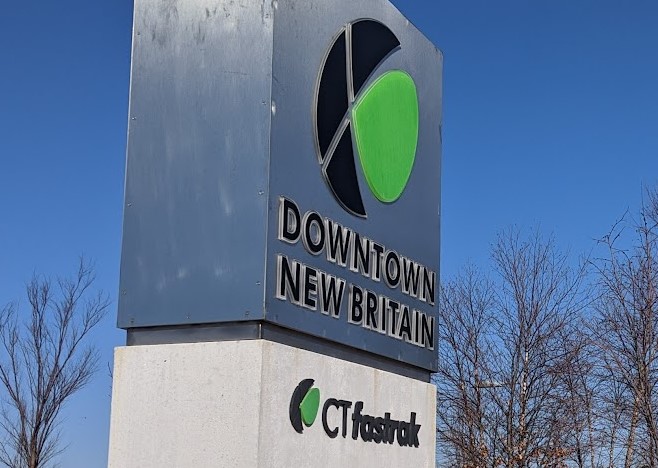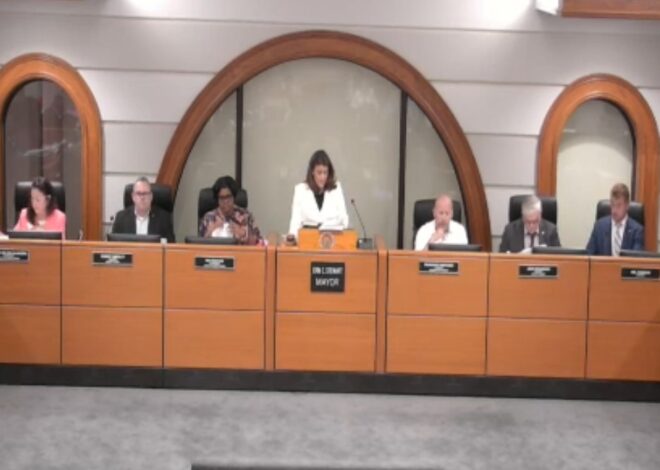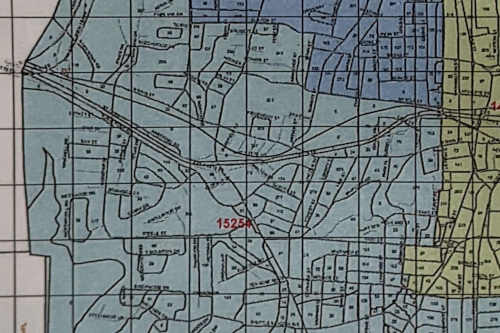
Commission Proposes Council District Plan That Fails To Reflect City’s Diversity
The city Redistricting Commission approved a proposed plan for City Council districts appearing to fall well short of representing the city’s diverse population.
The map for City Council districts approved unanimously on March 31, 2022 by the special city Redistricting Commission now goes to the Council for review and possible changes. The Commission’s decision accepts a proposal made by Republican Registrar of Voters Peter Gostin.
Like with Congressional, State Senate and State House of Representatives districts, the five districts on the New Britain City Council, commonly called “wards”, are reapportioned every ten years, following the national decennial census. Two thirds of New Britain’s fifteen member Council are presently elected, two each, from the five wards. Another five Council members are elected at-large. The reapportionment, also called redistricting, is done to ensure that each district represents approximately the same number of people.
According to data from the United States Census Bureau, the percentages of communities of color (including Latinos, African Americans, Asian Americans and others) among New Britain’s population has grown from 52% in the 2010 census to nearly 63% in the 2020 census.
That increase to 60% of the population means that 60% of the city’s five Council districts could be solid majorities of communities of color. An analysis done by New Britain Progressive volunteer efforts, using the web service, Dave’s Redistricting, showed that is possible.
While the data from Dave’s Redistricting appears to show that 57.47% of New Britain’s voting age population are members of communities of color, under the Redistricting Commission’s recommended map, only two of the city’s five Council districts would have voting age populations of greater than 57.47% communities of color — Ward 2 and Ward 3. A change made by the Commission, on March 31st, from an earlier iteration of Gostin’s proposal did not alter that.

The Commission’s proposal, labeled, “Gostin Compromise Map 3,” changed the way that the wards 2 and 3 divide the southeast corner of the city that is home to around 40% of city’s population. Earlier maps proposed that Ward 2 to be north of Ward 3, while “Gostin Compromise Map 3” proposes Ward 2 as, generally, all of the East Side neighborhood and Ward 3 as, generally, the North-Oak neighborhood, downtown and parts of the Arch Street neighborhood.
The main item discussed by Gostin at the meeting appeared to be his goal to remove the area including the Mount Pleasant neighborhood from the Council district that includes the center of the city. Mount Pleasant is currently in Ward 3, a district with a large majority of communities of color.
According to data from Dave’s Redistricting, Mount Pleasant, itself has over 1,000 residents, and 88% of Mount Pleasant’s voting age population are people color — 72% Latino and 16% Black. Counting some the surrounding neighborhoods, there appear to be greater than 2,000 people in the Mount Pleasant area, 72% of whom are people of color — 56% Latino and 18% Black.
Gostin’s plan, now approved by the Commission, placing the Mount Pleasant neighborhood in Ward 1 appears that it could a significant negative impact on the ability of voters of color in the city, as a whole, to have political representation and power proportionate with their share of the city’s population.
While the Commission’s approved map would appear to show Ward 1 as having a majority voting age population of communities of color, Ward 1 includes the entirety of the city’s generally prosperous, and whiter, West End neighborhood. The parts of the proposed Ward 1 other than Mount Pleasant and the surrounding neighborhood appear to be majority white, which could leave the voting power of Mount Pleasant’s residents diminished in Council elections.
Like with Ward 1, Gostin’s plan also appears to show Ward 5 as having nearly 50% white voting age population. If white voter participation were higher in city elections in wards 1 and 5, that would translate into 60% of the voting power in ward Council elections being controlled by white voters — the opposite of the fact that the population of the city is greater than 60% communities of color.
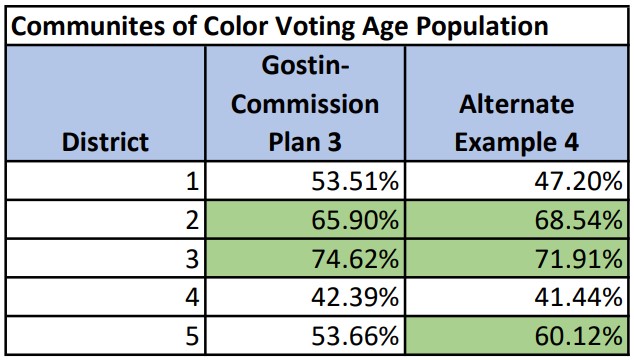
While the goal Gostin stated, in placing Mount Pleasant into Ward 1, was in the interest of making the districting plan “compact”, an analysis done by New Britain Progressive volunteer efforts, again using Dave’s Redistricting, showed that both the goals of diverse representation and compact districting could be accomplished by including Mount Pleasant and the surrounding neighborhood into Ward 5. That plan would move most of the Broad Street neighborhood into Ward 1 and make other, smaller changes.
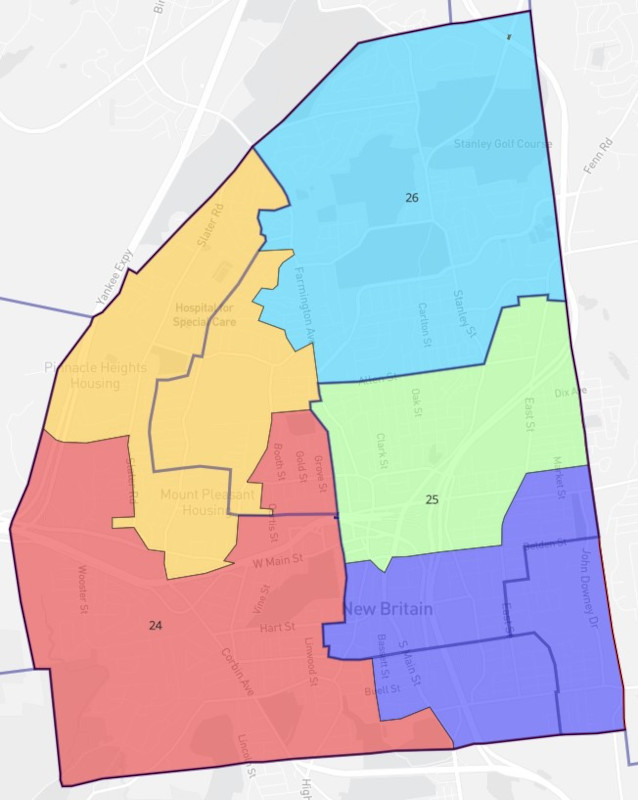
Unlike the plan approved by the Commission, that alternative, “Example 4,” would appear to create three Council wards with at least 60% voting age populations of communities of color, wards 2, 3 and 5.
The Redistricting Commission’s responsibility under the City Charter is to report a draft map of Council districts for the Council to review and approve. Now that it has, the Council considers the proposal and can make changes to it before approving it.
If Council misses its deadline to approve a Council map, the mayor then proposes a three-person commission, who then make the final decision on the district lines.
The Charter requires that each of the five Council wards,
(1) shall be of substantially equal population and otherwise consistent with all federal and state constitutional and statutory requirements; (2) to the extent possible consistent with the preceding, shall maintain the integrity of recognized neighborhood planning areas; (3) shall be geographically contiguous and compact; and (4) to the extent possible consistent with the preceding, shall be consistent with existing legislative districts.
“Federal and state constitutional and statutory requirements,” have long been understood to include compliance with the federal Voting Rights Act.
Once approved, the new City Council ward boundaries will remain in effect for ten years. Those districts will be in place for the 2023, 2025, 2027, 2029 and 2031 city elections.


